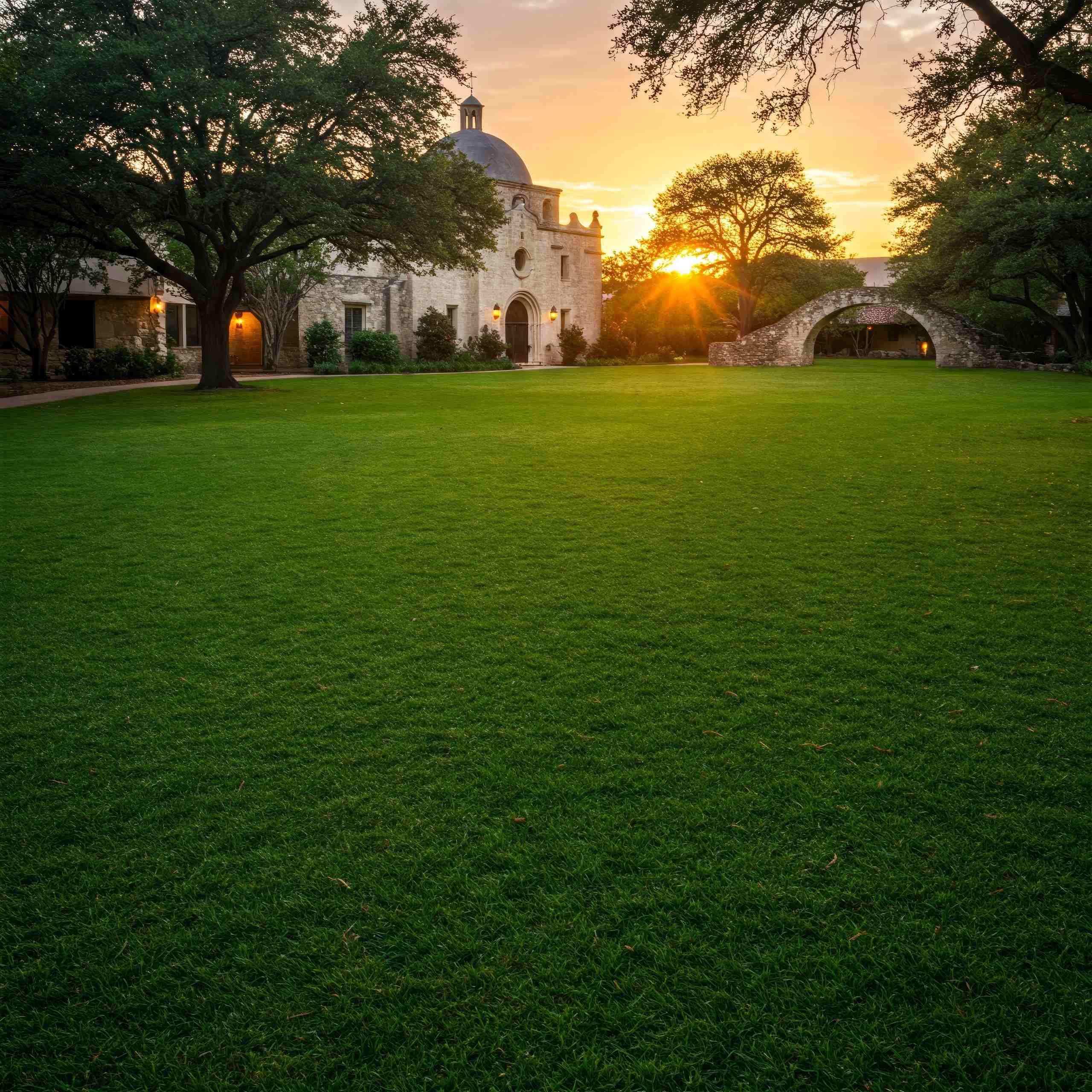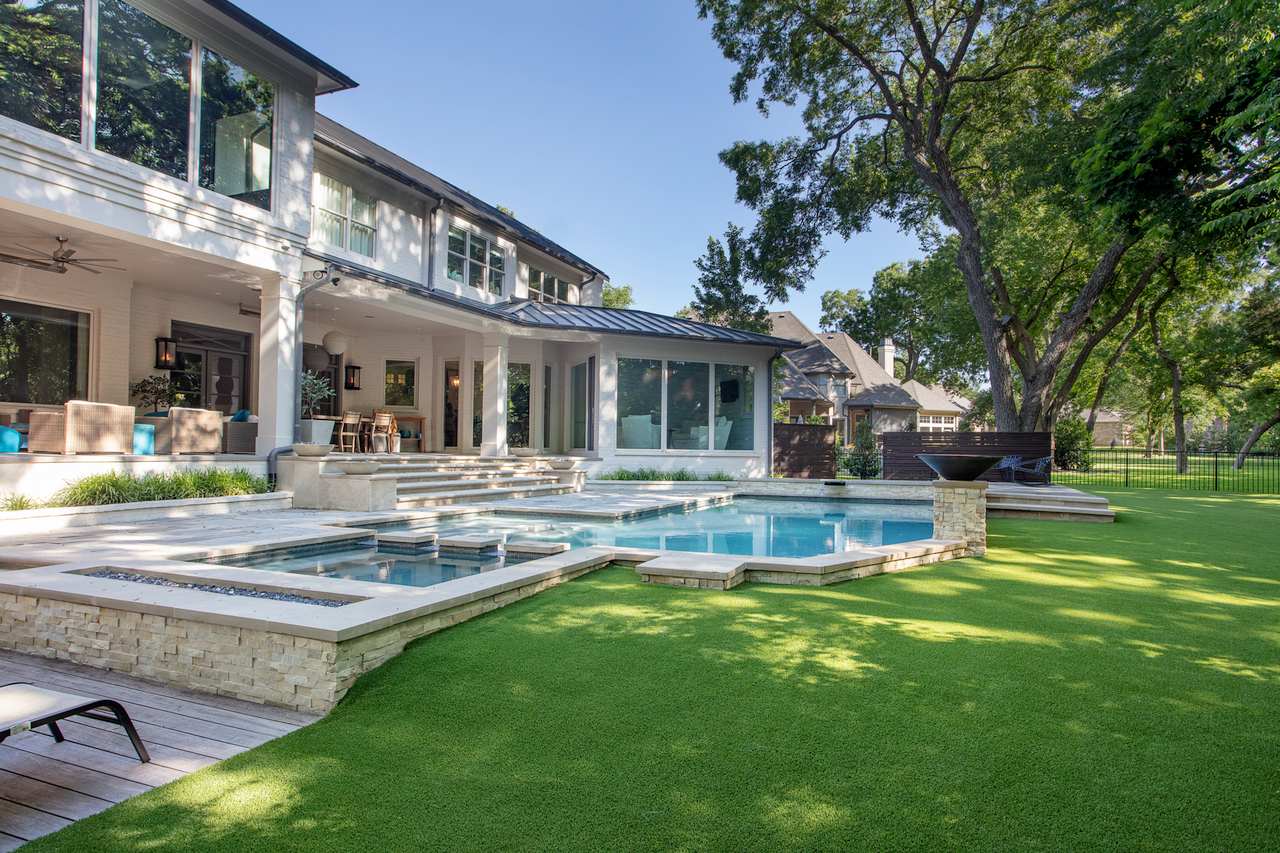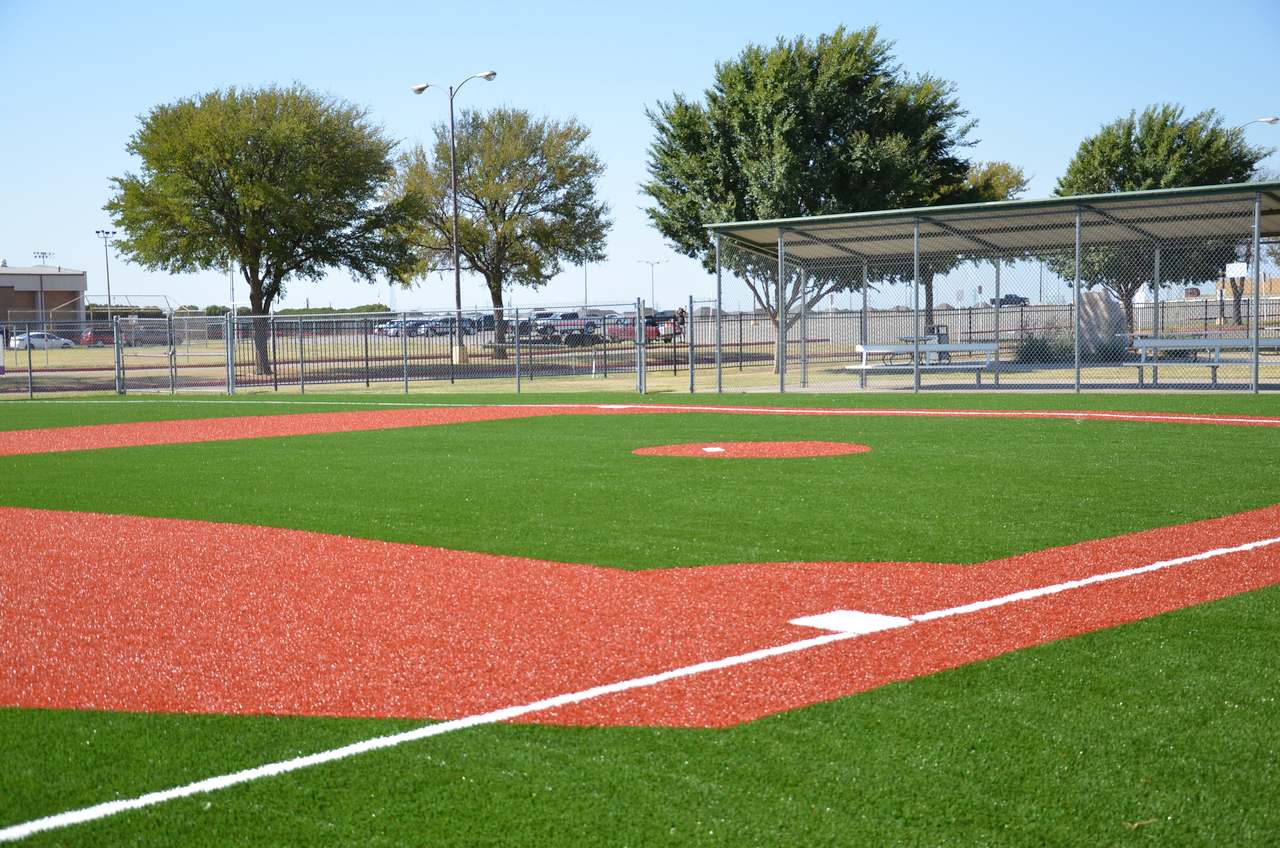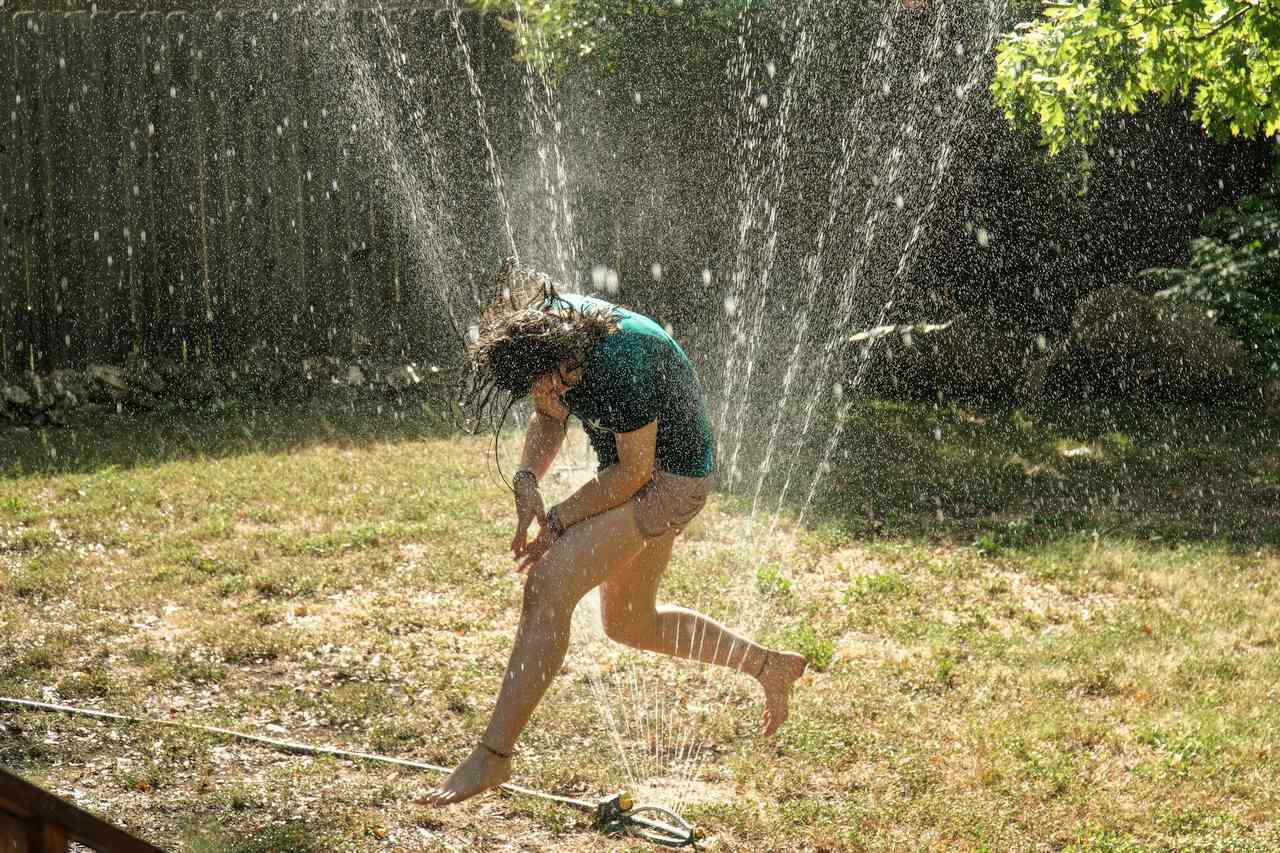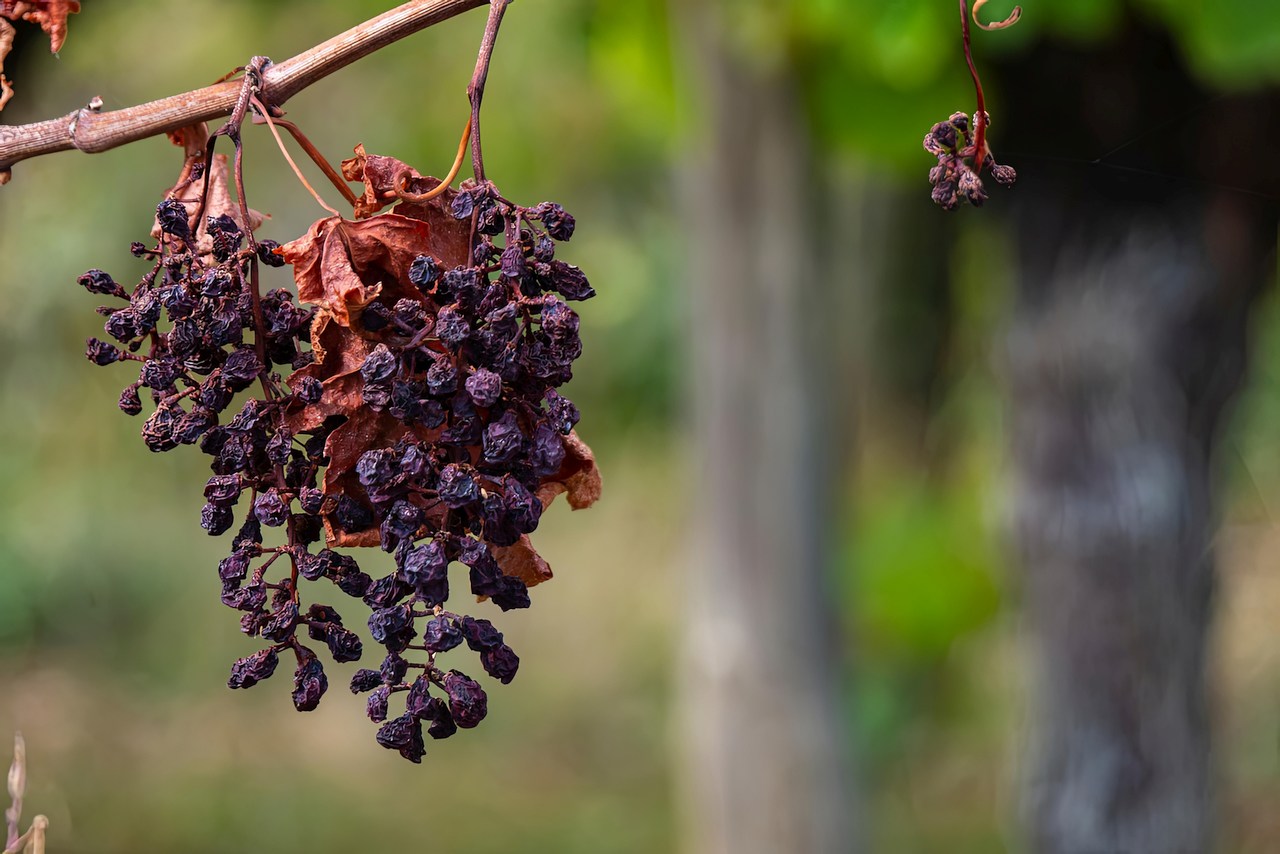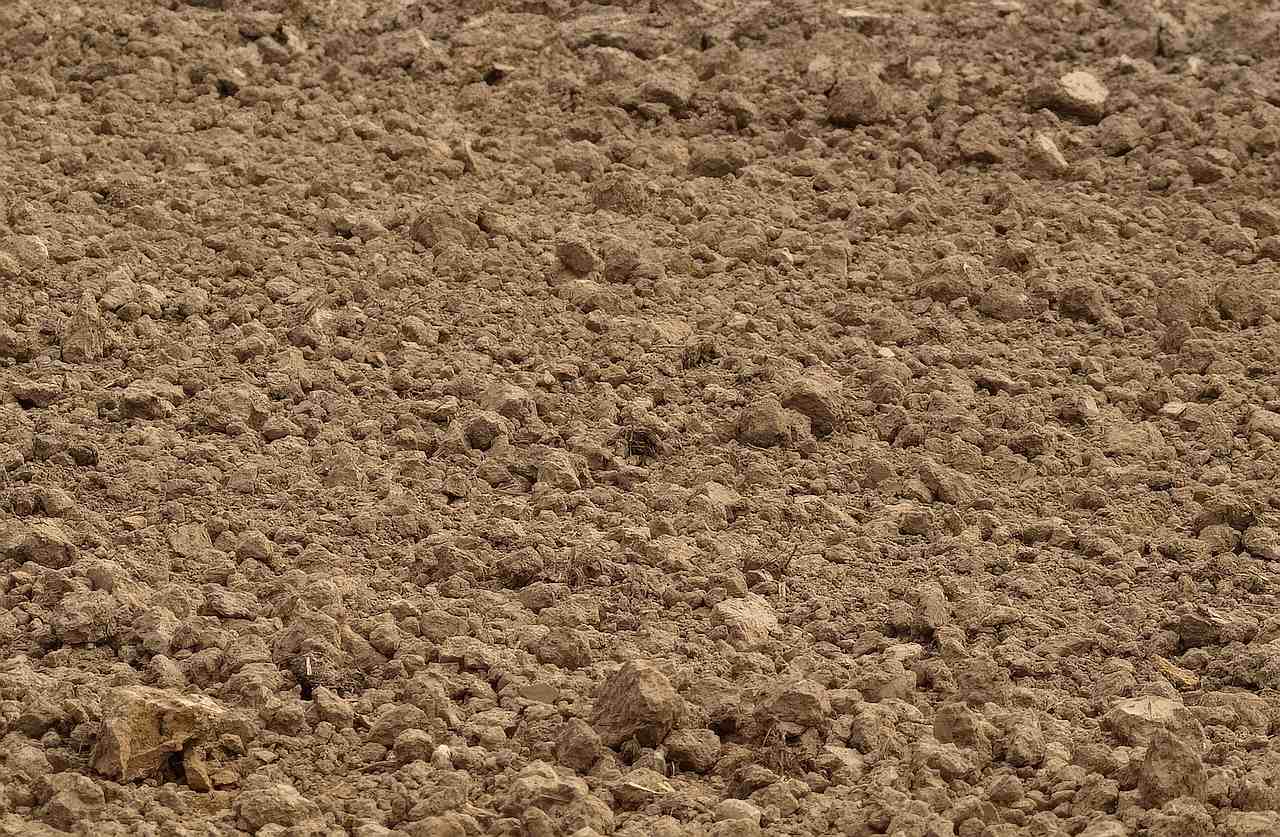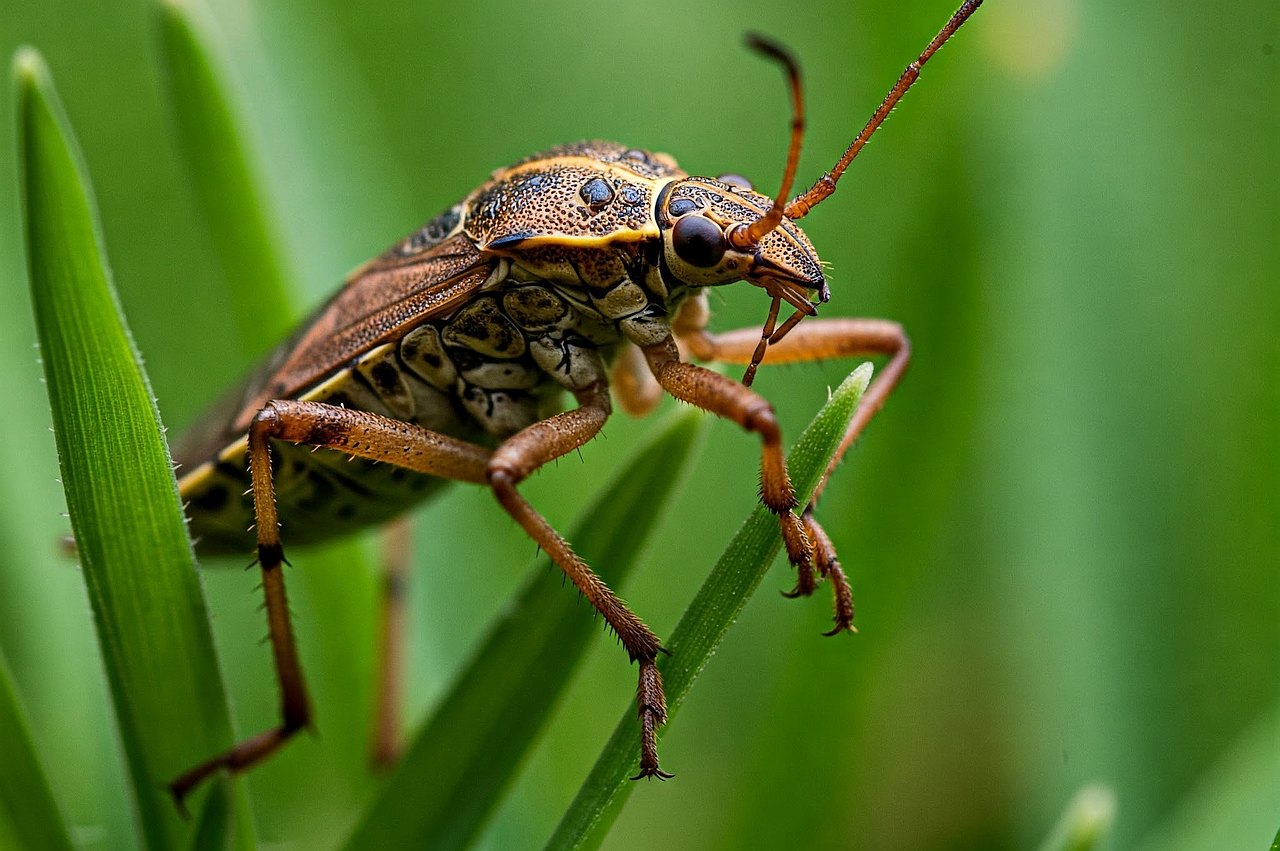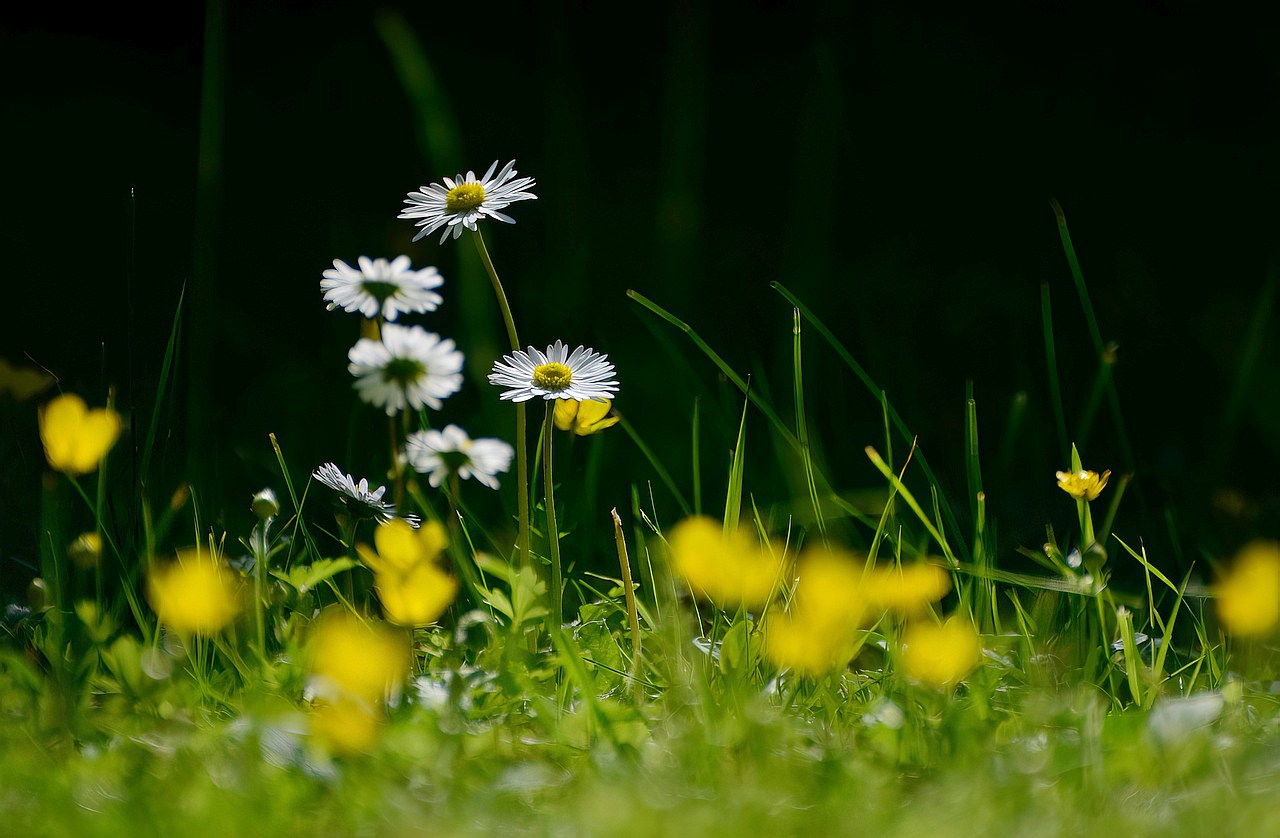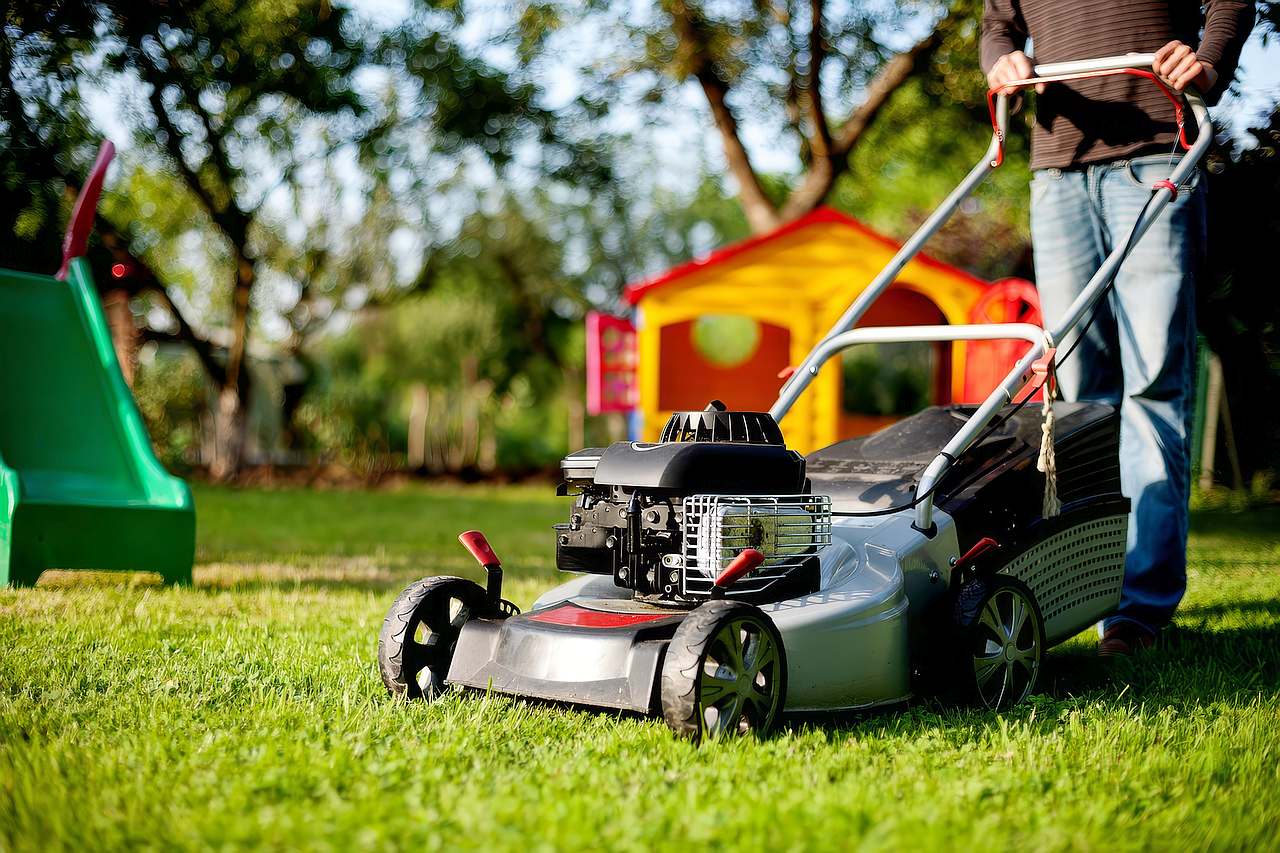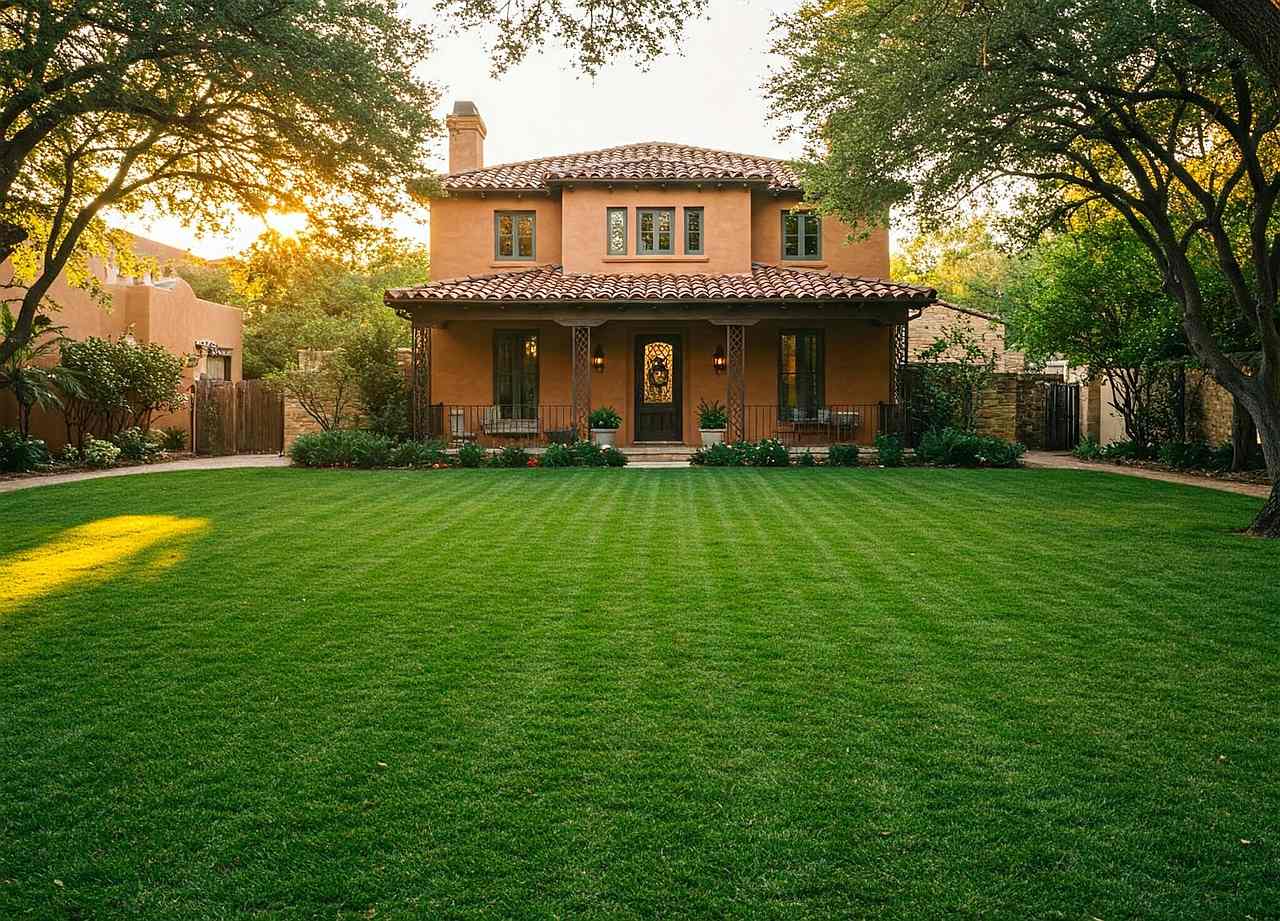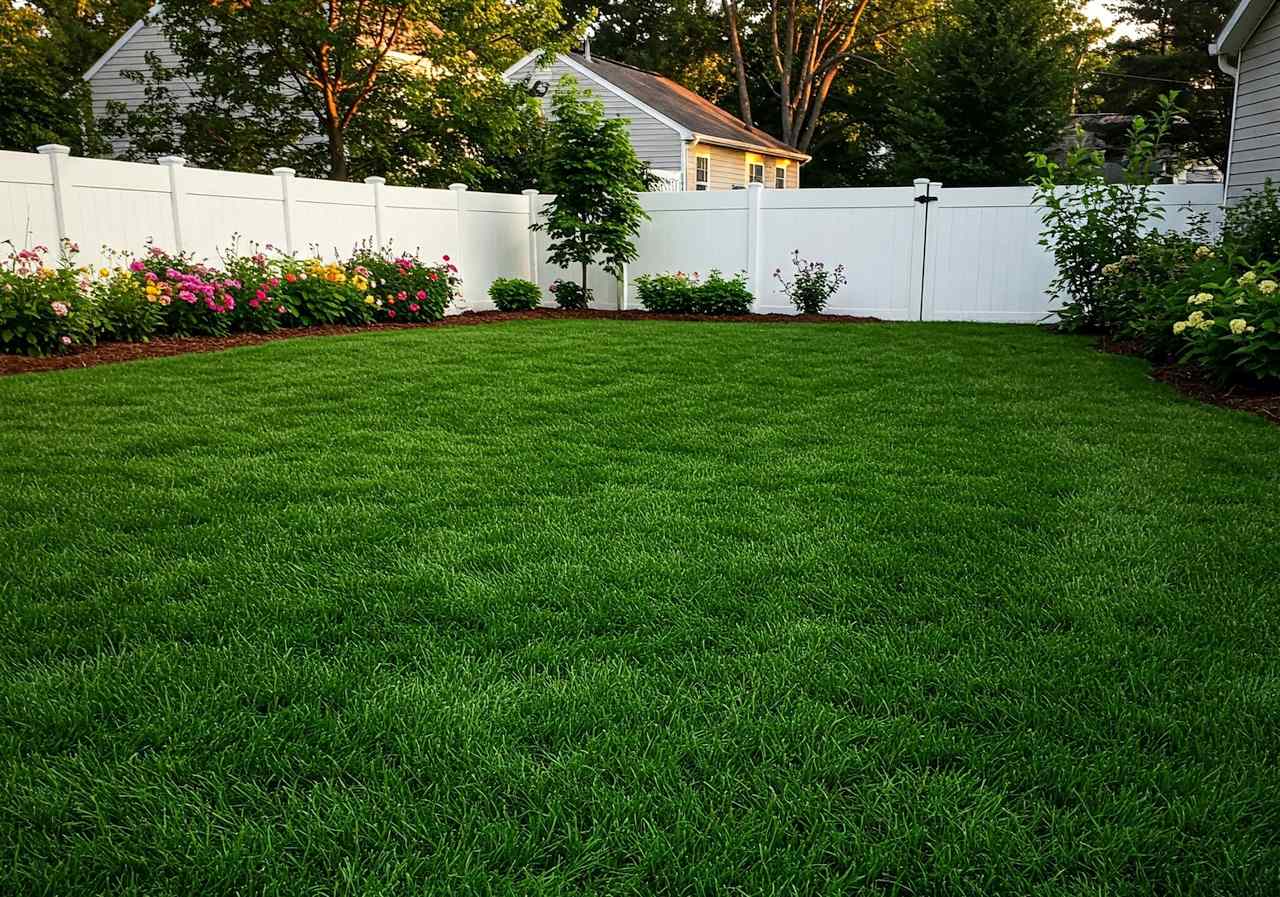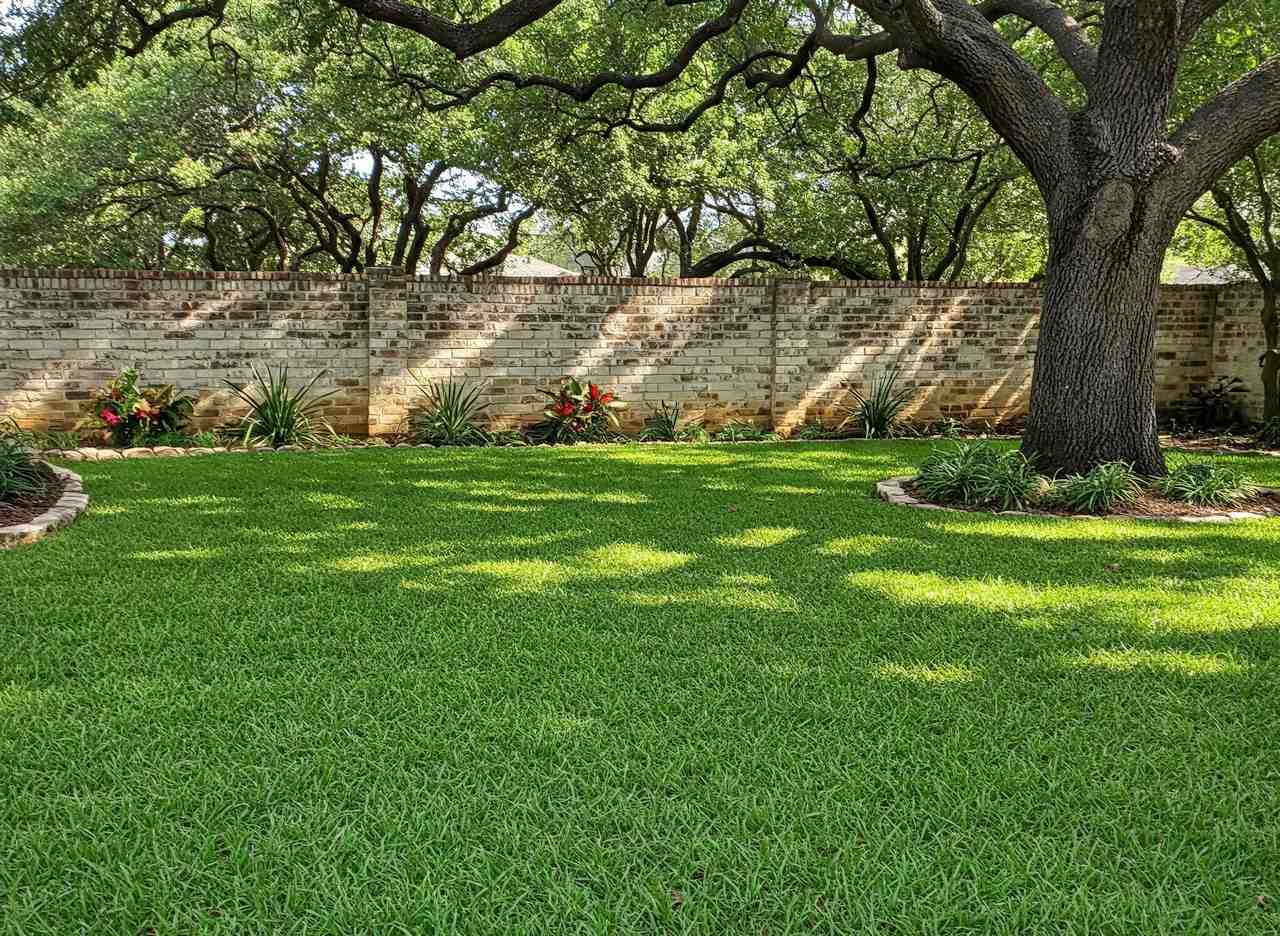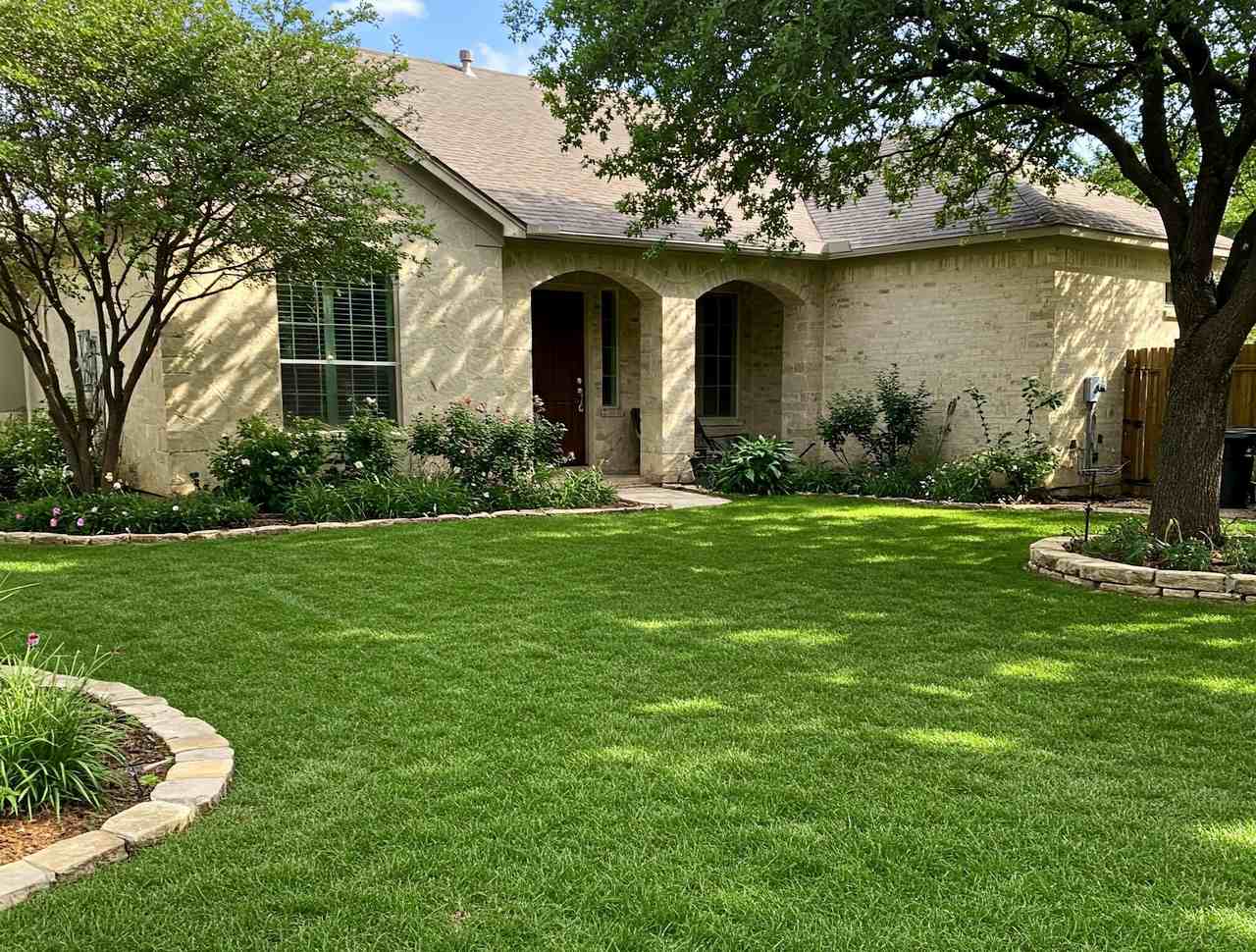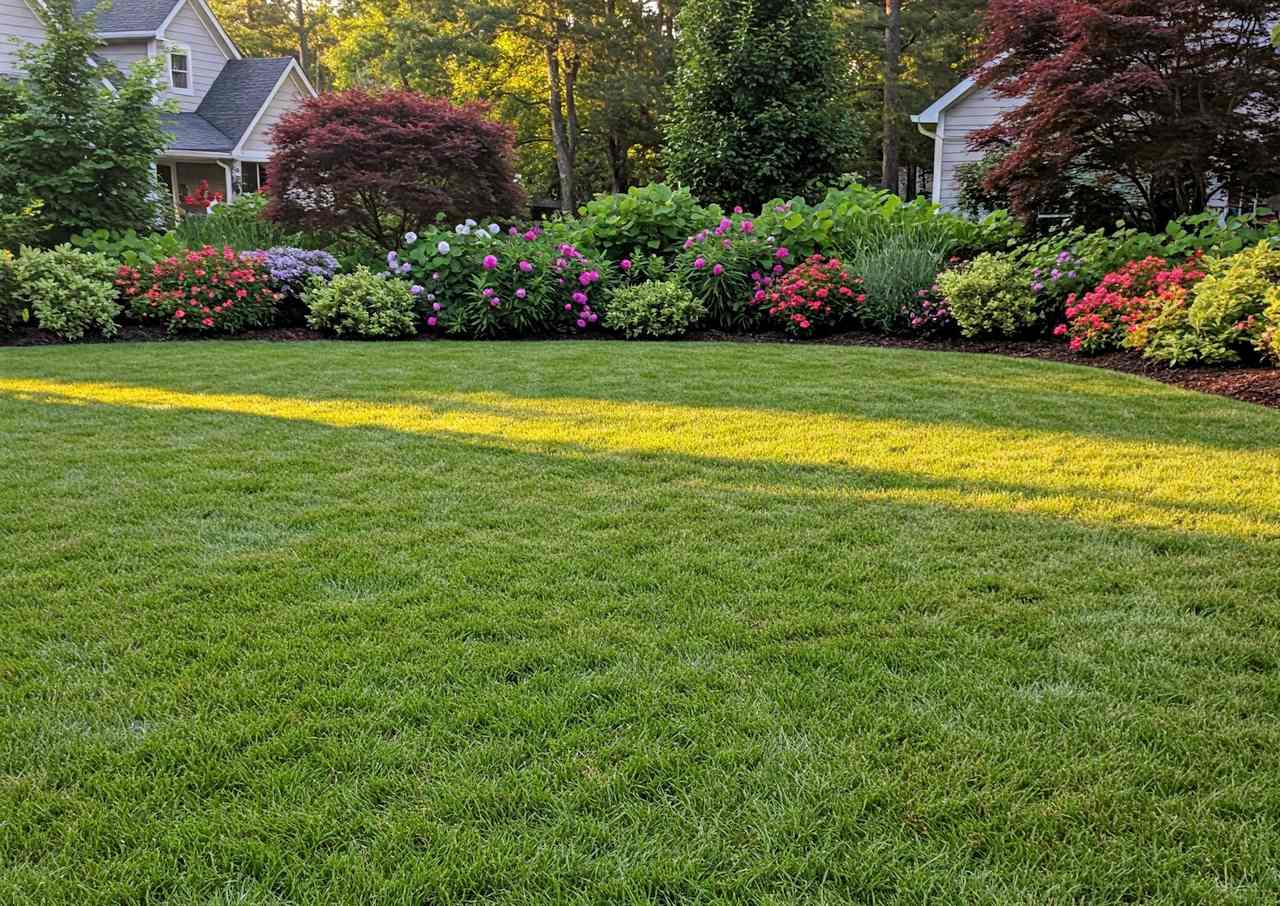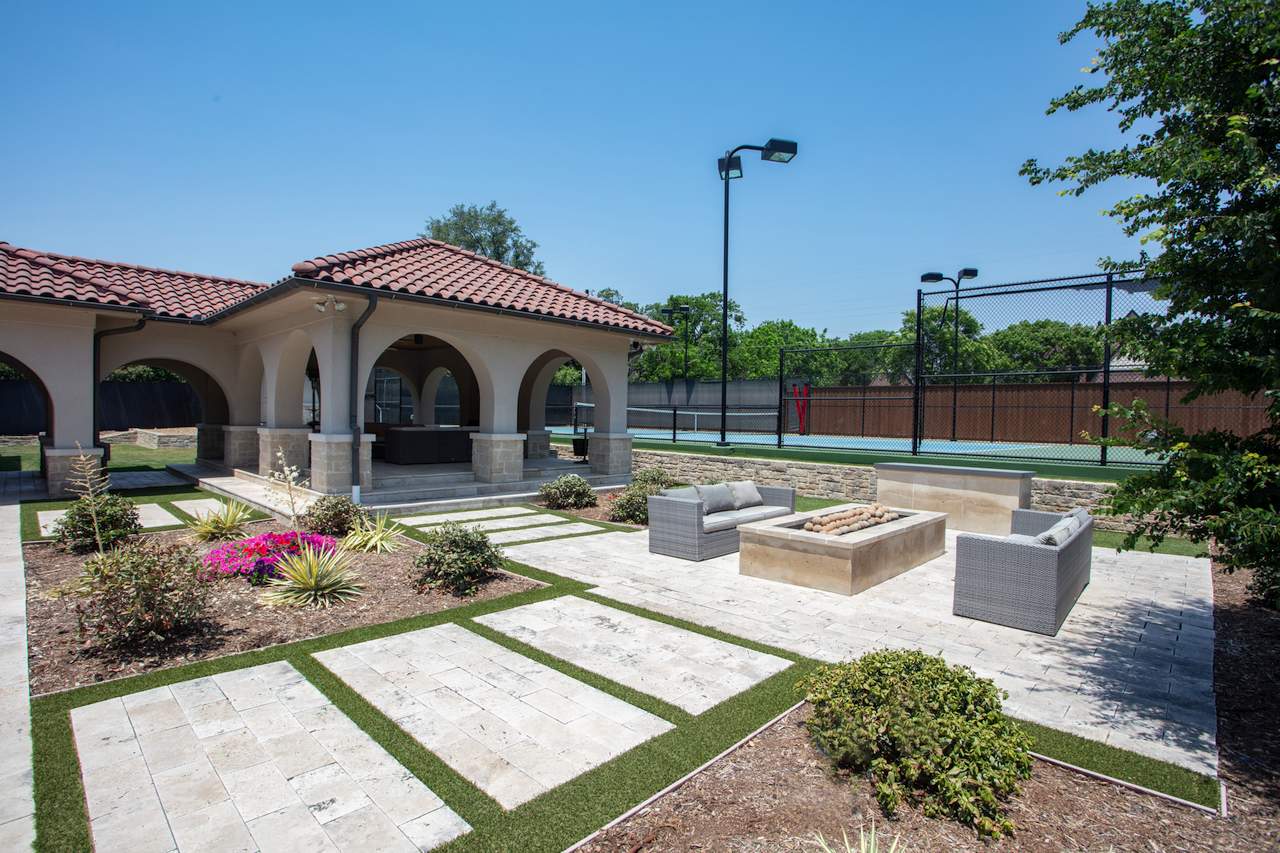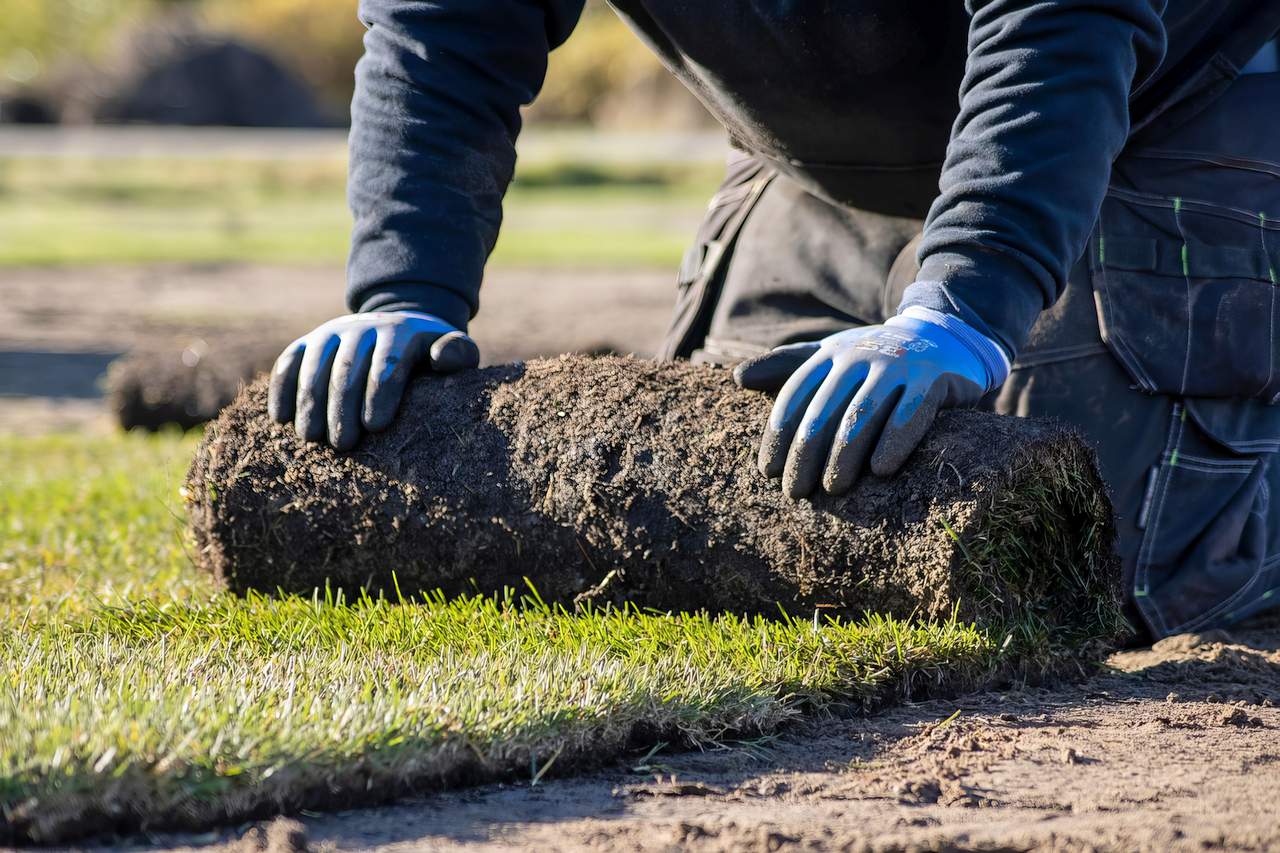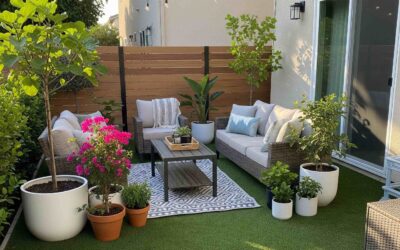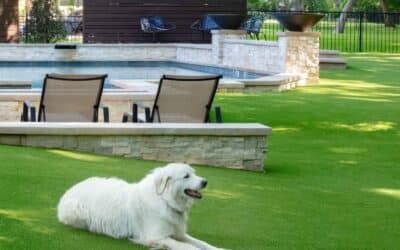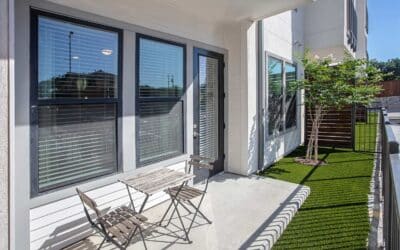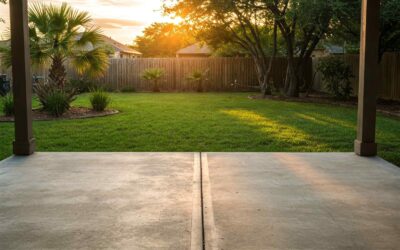Extreme heat, drought, shade, watering restrictions…. the challenges for San Antonio homeowners when maintaining a grass lawn are many!
It helps to install the right grass from the beginning—but what’s the best grass for San Antonio lawns?
We take a look at the best grass types for growing healthy, lush lawns that can withstand the challenges of the San Antonio climate and soil conditions…
What is the Best Grass for San Antonio?
The best grass for San Antonio lawns must ideally be drought-resistant, tolerant of intense heat, and sometimes, adaptable to poor soil conditions or shade. Depending on your appetite for maintenance, the precise use of your lawn, and local conditions in your yard, the best grass is usually Bermuda Grass, St, Augustine’s, Zoysia, Centipede Grass, Buffalo Grass or Bahia.
Below is a comparison of how tolerant each grass type is of the main challenges when maintaining a lawn in San Antonio, Texas:
|
GRASS |
Maintenance |
Drought |
Heat |
Shade |
Soil |
Traffic |
Pests |
Appearance |
|
Bermuda |
High |
High |
High |
Low |
Moderate |
High |
Moderate |
High |
|
Zoysia |
Moderate |
Moderate |
High |
High |
High |
High |
High |
High |
|
St. Augustine |
Moderate |
Low |
High |
High |
Moderate |
Moderate |
High |
High |
|
Buffalo |
Low |
High |
High |
Low |
Moderate |
Low |
Moderate |
Moderate |
|
Centipede |
Low |
Low |
High |
Moderate |
Moderate |
Low |
Moderate |
Moderate |
|
Bahia |
Low |
High |
High |
Low |
High |
Moderate |
High |
Low |
We go into this deeper later in this post but first, a grass alternative to consider…
What’s the Lowest Maintenance Grass for San Antonio Lawns?
That’s easy. Artificial grass.
While San Antonio gardeners who love their real grass lawns may loathe the thought of ripping up their grass, the water-saving benefits and low maintenance requirements of synthetic grass are making this alternative hard to ignore for many homeowners.
Improved artificial grass manufacturing methods have led to great advances in the quality of the turf. It now graces many outdoor spaces in San Antonio from sports stadiums to backyard lawns, play areas, swimming pool areas, and backyard putting greens.
Even the University of Texas at San Antonio (UTSA) Roadrunners football team plays their home games on an artificial turf field at the Alamodome—alleviating many of the challenges and expense of maintaining real grass in our climate.
Homeowners and businesses are switching because of the many low-maintenance benefits of synthetic turf—and we’ve helped thousands make the switch in the past decade.
SAVE TIME, MONEY & WATER WITH ARTIFICIAL GRASS
The experienced team at Artificial Grass Pros will provide a free estimate and help you make the switch. Contact us here.
Main Challenges with Growing Grass Lawns in San Antonio
San Antonio homeowners face many challenges from the natural world when attempting to establish and maintain a flourishing lawn.
High Temperatures
The heat is intense in Central Texas, with long, hot summers and temperatures frequently exceeding 90°F, leading to increased evaporation and stress on the grass.
Drought
The semi-arid climate and periodic drought conditions in this part of the state also lead to watering restrictions in the City of San Antonio. Watering is only permitted in the evenings, at night-time, and in the early mornings.
Poor Soil Conditions
Much of the soil in the San Antonio area is rocky, shallow, and clay-heavy, which can lead to poor drainage and difficulty in establishing deep grass roots. Sandy soils are also common.
Pest Issues
Common lawn pests such as chinch bugs, grubs, and armyworms can damage grass, particularly during the hotter months.
Weeds
Persistent weeds like crabgrass and dandelions thrive in harsh conditions and can outcompete grass, invading lawns and creating headaches for lawn lovers.
Maintenance Costs
Because of all these potential issues, lawns need regular mowing, irrigation, fertilization, weedkilling, aerating, and pest control.
The maintenance costs of real grass are high—not to mention the time and effort it takes out of your week unless you hire San Antonio lawn care services.
Top Grass Options for San Antonio: A Deeper Dive
Let’s consider six of the best grass types for San Antonio, Texas in more detail….
Bermuda Grass
Bermuda Grass is normally near the top of any list of grass types in Texas because it is one of the most popular warm-season grasses in the entire south.
Its attractive, verdant, lush appearance is backed up by excellent tolerance of foot traffic, heat resistance, and drought tolerance. It also handles the clay soils around San Antonio very well.
The quick recovery capabilities of Bermuda Grass after damage make it a popular choice not only in backyards but also on sports fields and San Antonio golf courses.
However, frequent Bermuda Grass maintenance is required, which is one of its main drawbacks. Bermuda grass grows quickly and needs regular mowing. It also struggles in cool weather and shade so you need a full sun lawn for this grass type to really flourish.
Zoysia Grass
Zoysia is one of the best grass types for San Antonio, Texas if your yard is shaded or not sunny enough for Bermuda Grass to flourish.
Although it’s one of the more expensive warm-season grass types, homeowners based in the southern states are rewarded with a superb, low-maintenance, carpet-like appearance even in shady conditions.
Zoysia offers thin blades and a soft lawn with deep roots even in high salt, clay or sandy soil conditions. It’s also highly pest-resistant and tolerates cold better than most other warm-season grasses.
On the flip side, Zoysia recovers slowly from high-traffic damage, turns brown in drought periods (but recovers quickly), and requires a little maintenance to prevent it from invading flower beds.
St. Augustine Grass
St. Augustine is another grass type well-suited to shaded backyards in San Antonio, able to thrive in shade or partial sunlight.
Again, this turf produces a carpet-like appearance with its wide, thick blades from sod installations across the south—even in sandy soils.
The main downsides of St. Augustine are that it can invade flower beds if not managed and it is vulnerable to frosts and drought. It requires regular irrigation in the drier months and needs more water than Bermuda Grass.
Though generally pest-resistant, aggressive pests like chinch bugs can become a problem and Zoysia generally handles foot traffic better than St. Augustine.
Buffalo Grass
Buffalo Grass is a more drought-tolerant and low-maintenance option than St. Augustine or Zoysia for San Antonio yards. It is also more tolerant of the colder temperatures sometimes experienced in winter in this part of the state.
Buffalo Grass grows best in areas with 25 inches of rain or less per year. San Antonio averages around 30 inches of rain per year, which can encourage weeds, so a little maintenance is required to prevent this. But no fertilizer and relatively infrequent mowing is required.
Buffalo Grass is well adapted to the soil conditions around San Antonio but struggles in shade and is generally poorly suited to high-traffic areas—especially when compared to other drought-tolerant options like Bermuda Grass.
This grass may also be susceptible to pests like false smut, a fungal disease that affects germination.
Centipede Grass
Recognizable by its lighter green color (“crabapple green”), Centipede Grass is highly tolerant of the heat and provides thick ground cover—but is far less drought-resistant than Buffalo or Bermuda Grass.
This grass needs additional watering during periods of low rainfall but requires infrequent mowing and weeding—and no fertilization—making it a decent low-maintenance choice for San Antonio backyards.
Centipede Grass is suitable for moderately clay soils but prefers sandy varieties—and it is somewhat susceptible to the cold, although usually recovers well when temperatures rise.
This grass is less shade tolerant than Zoysia and St. Augustine and is susceptible to bugs like mole crickets, chinch bugs, and billbugs. It is also relatively intolerant of high traffic.
Bahia Grass
Bahia Grass is a great option for lawns growing in poor soil conditions in San Antonio, Texas. It is a resilient, adaptable variety with thin, spiky leaves and a deep, thick root system that grows well in sandy and high-clay environments or with poor drainage.
Bahia needs full sun and tolerates the heat of Central Texas well, also handling drought well with low watering and mowing requirements. It is also highly pest-resistant, adding to its reputation for resilience.
On the flip side, Bahia prefers mild winters and struggles in shade. Weeds can be an issue and this grass type is sometimes viewed as pasture grass rather than lawn grass due to its less attractive appearance than other Texas grass types covered here.
Want a Low-Maintenance Grass Alternative for Your San Antonio Lawn?
San Antonio landscaping needn’t involve any real grass at all. Homeowners who want the aesthetic benefits of natural grass without the water or work involved in maintaining a lawn are increasingly switching to low-maintenance artificial grass landscaping, native grasses, and xeriscaping.
The best artificial grass looks equally at home in front or back yards next to hardscaping materials like gravel, crushed rock or pavers and organic options, such as mulch and native Texan plants.
A high-quality artificial grass lawn installed properly should last 15-20 years and save money compared with real grass after about year five—as well as saving water and other resources. Remember, there’s no mowing, fertilizers, pesticides, aeration, weedkillers or any of the other care and attention required by real grass.
FAQs
Considering the Switch To Artificial Grass?
If you’re considering different San Antonio backyard landscaping ideas, discuss your options with an artificial grass professional.

